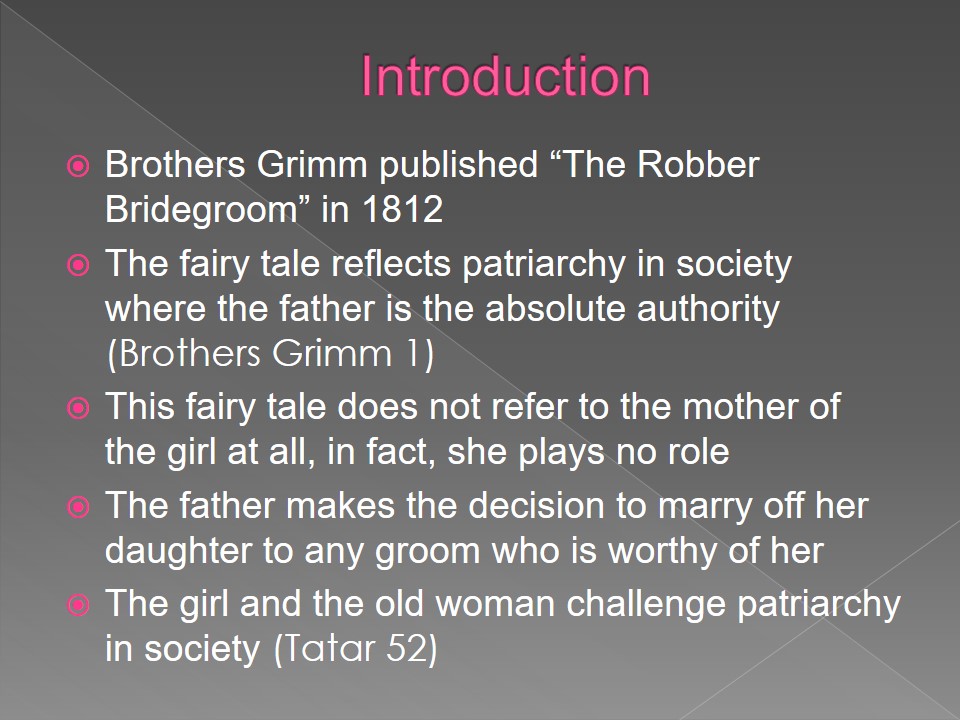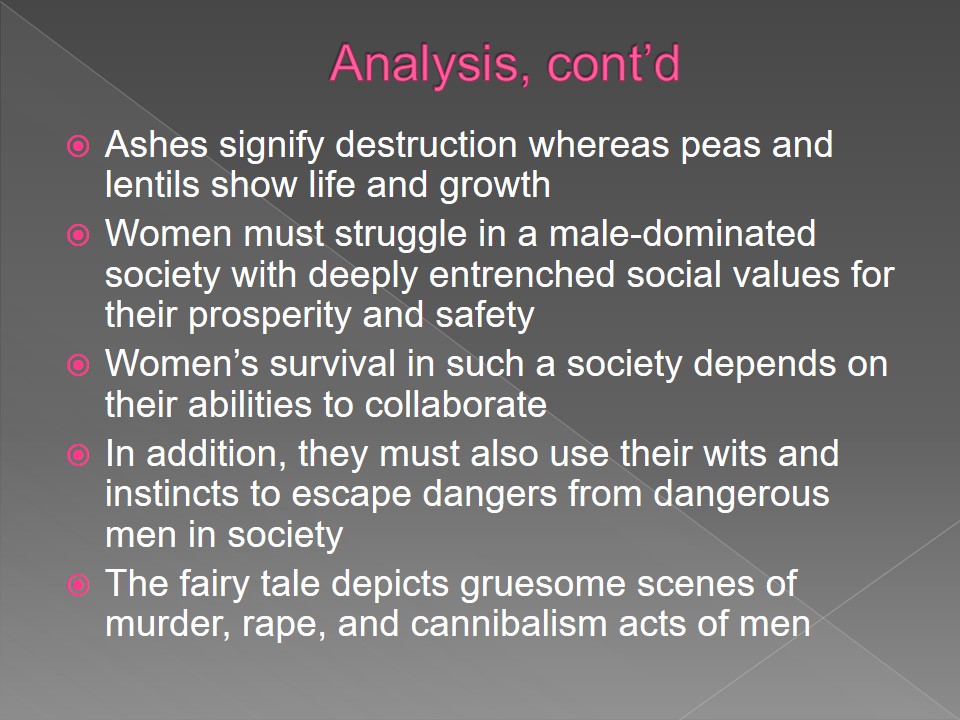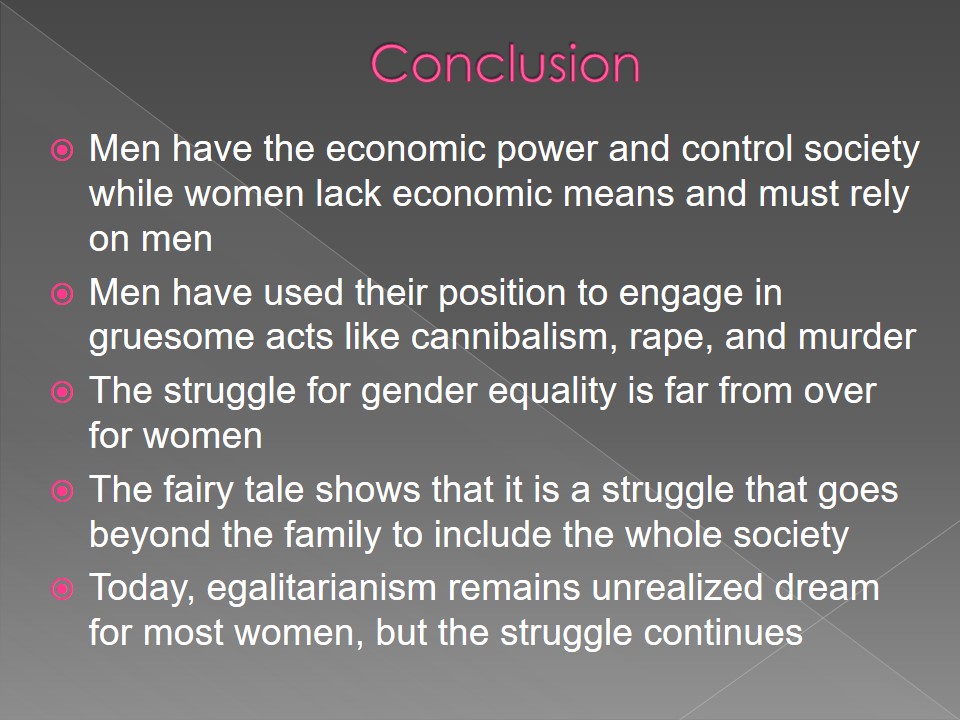Introduction
- Brothers Grimm published “The Robber Bridegroom” in 1812.
- The fairy tale reflects patriarchy in society where the father is the absolute authority (Brothers Grimm 1).
- This fairy tale does not refer to the mother of the girl at all, in fact, she plays no role.
- The father makes the decision to marry off her daughter to any groom who is worthy of her.
- The girl and the old woman challenge patriarchy in society (Tatar 52).

Analysis
- In a patriarchy, the father has the absolute responsibility to seek for a husband for her daughter.
- The father does not consider her daughter’s wishes or feelings.
- The arranged marriage would proceed because the girl cannot challenge her father’s position in such a society.
- The daughter would bear all consequences in any case her father makes wrong decisions.
- The groom uses temporary ashes as a means to provide a one-way direction to the girl, but the girl uses her own signs (lentils and peas) because she does not trust the groom.
- Ashes signify destruction whereas peas and lentils show life and growth.
- Women must struggle in a male-dominated society with deeply entrenched social values for their prosperity and safety.
- Women’s survival in such a society depends on their abilities to collaborate.
- In addition, they must also use their wits and instincts to escape dangers from dangerous men in society.
- The fairy tale depicts gruesome scenes of murder, rape, and cannibalism acts of men.


Conclusion
- Men have the economic power and control society while women lack economic means and must rely on men.
- Men have used their position to engage in gruesome acts like cannibalism, rape, and murder.
- The struggle for gender equality is far from over for women.
- The fairy tale shows that it is a struggle that goes beyond the family to include the whole society.
- Today, egalitarianism remains unrealized dream for most women, but the struggle continues.

Works Cited
Brothers Grimm. The robber bridegroom. 1812. Web.
Tatar, Maria. The Classic Fairy Tales. New York: W.W. Norton & Company Inc., 1999. Print.